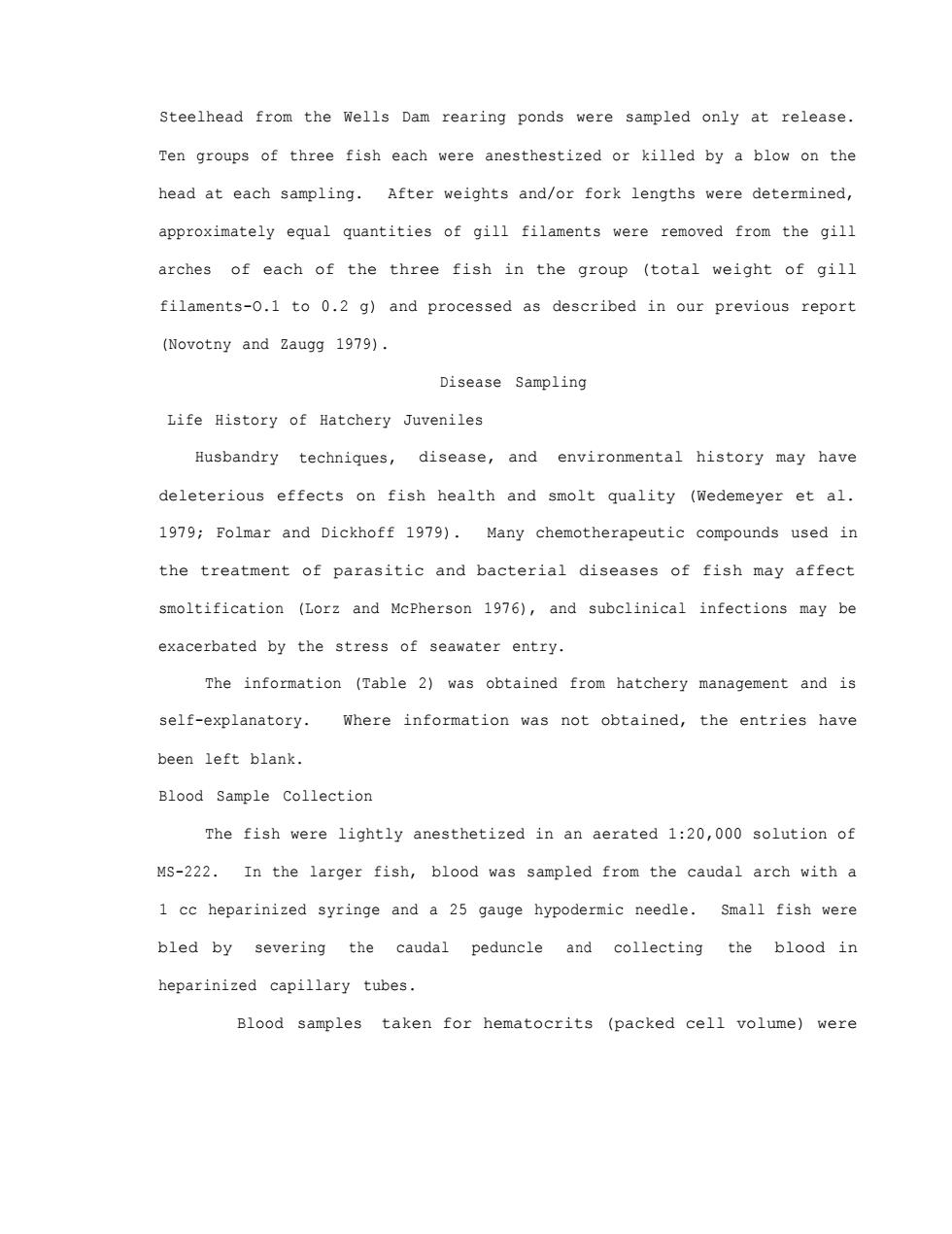正在加载图片...

Steelhead from the Wells Dam rearing ponds were sampled only at release. Ten groups of three fish each were anesthestized or killed by a blow on the head at each sampling.After weights and/or fork lengths were determined, approximately equal quantities of gill filaments were removed from the gill arches of each of the three fish in the group (total weight of gill filaments-0.1 to 0.2 g)and processed as described in our previous report (Novotny and Zaugg 1979). Disease Sampling Life History of Hatchery Juveniles Husbandry techniques,disease,and environmental history may have deleterious effects on fish health and smolt quality (Wedemeyer et al. 1979;Folmar and Dickhoff 1979).Many chemotherapeutic compounds used in the treatment of parasitic and bacterial diseases of fish may affect smoltification (Lorz and McPherson 1976),and subclinical infections may be exacerbated by the stress of seawater entry. The information (Table 2)was obtained from hatchery management and is self-explanatory.Where information was not obtained,the entries have been left blank. Blood Sample Collection The fish were lightly anesthetized in an aerated 1:20,000 solution of MS-222.In the larger fish,blood was sampled from the caudal arch with a 1 cc heparinized syringe and a 25 gauge hypodermic needle.Small fish were bled by severing the caudal peduncle and collecting the blood in heparinized capillary tubes. Blood samples taken for hematocrits (packed cell volume)were Steelhead from the Wells Dam rearing ponds were sampled only at release. Ten groups of three fish each were anesthestized or killed by a blow on the head at each sampling. After weights and/or fork lengths were determined, approximately equal quantities of gill filaments were removed from the gill arches of each of the three fish in the group (total weight of gill filaments-O.1 to 0.2 g) and processed as described in our previous report (Novotny and Zaugg 1979). Disease Sampling Life History of Hatchery Juveniles Husbandry techniques, disease, and environmental history may have deleterious effects on fish health and smolt quality (Wedemeyer et al. 1979; Folmar and Dickhoff 1979). Many chemotherapeutic compounds used in the treatment of parasitic and bacterial diseases of fish may affect smoltification (Lorz and McPherson 1976), and subclinical infections may be exacerbated by the stress of seawater entry. The information (Table 2) was obtained from hatchery management and is self-explanatory. Where information was not obtained, the entries have been left blank. Blood Sample Collection The fish were lightly anesthetized in an aerated 1:20,000 solution of MS-222. In the larger fish, blood was sampled from the caudal arch with a 1 cc heparinized syringe and a 25 gauge hypodermic needle. Small fish were bled by severing the caudal peduncle and collecting the blood in heparinized capillary tubes. Blood samples taken for hematocrits (packed cell volume) were